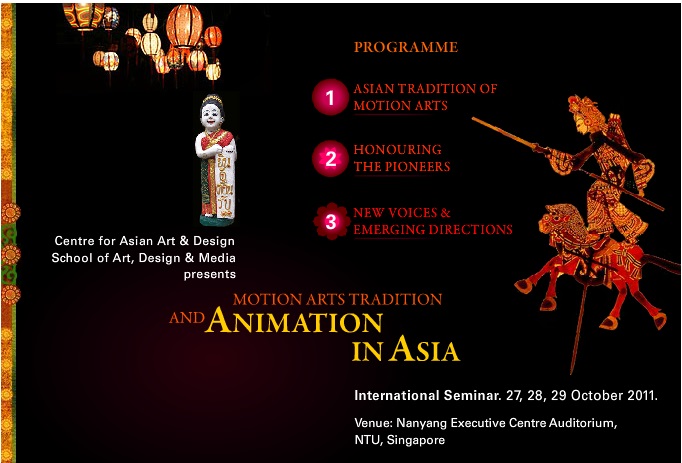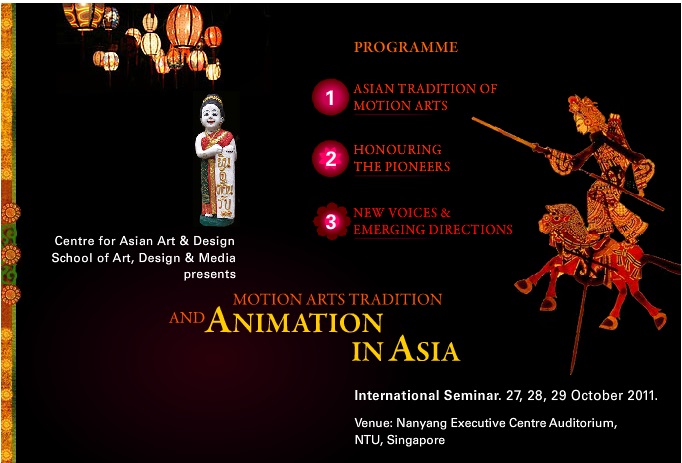Animation in Asia

Date: 27-29 October 2011, (Thursday-Saturday)

Time: 9.30am - 5.30pm
About the Seminar
Presented by the Centre for Asian Art & Design (CAAD); School of Art, Design & Media at NTU, the International Seminar on 'Motion Arts Tradition and Animation in Asia' will bring together the leading scholars on Asian Motion Arts, the Pioneers of Animation in Asia, and the best of young Asian Animators in a three-day event, open to all interested in animation and future directions in animation education.
The Seminar is an attempt to see and place the future development of animation and education for animation in the context of the rich dynamic and motion arts tradition of Asia; and to discuss how this heritage can be used to transform the curricula for animation studies. Each day of the 3 day Seminar is dedicated to a theme: the first day to look at the Asian Traditions of Dynamic Story-telling and Motion Arts; the second day to hear from and honour the pioneers of the modern animation in Asia; and the third day to listen to important new voices of Asian animators and to discuss future directions in animation.
By looking at animation as a way of dynamic story-telling, with stylized character visualization, narratives, music and choreography; the thousands of years old Asian traditions of classical performing arts - from dances to martial arts - become a major resource for animation and future development of animation. A great depth of knowledge exists about stylized movements and gestures in the classical dance traditions of Asia to evoke intended emotional responses in the audience; a wealth of approaches exist for character visualization and differentiation in the many face make-ups and masks of Asian performances; many narrative forms exist to tell stories in universal, non-verbal languages of movements; and there exist systems for integrating it all in visually appealing and enchanting performances,
The concluding discussion is expected to suggest the way forward for formulating a new pedagogy for animation, which integrates the universal insights of the tradition as an essential ingredient for future creativity.

